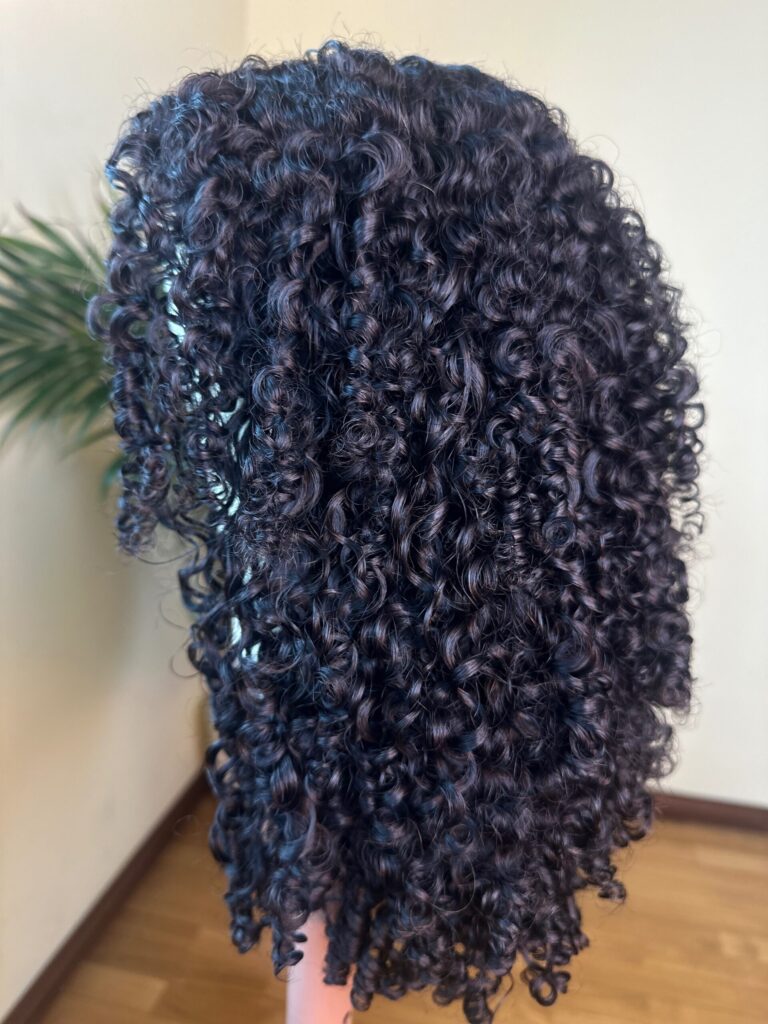How Often Should You Wash Your Wig?

October 2, 2025
Wigs have become an essential part of many people’s lives, offering versatility, convenience, and an opportunity to experiment with different styles. Whether you’re wearing wigs for medical reasons, fashion, or simply as a way to change up your look, proper maintenance is key to keeping your wig looking fresh and feeling comfortable.
One of the most common questions that wig wearers ask is: How often should you wash your wig? While this may seem like a simple question, the answer depends on a number of factors, including the type of wig, how frequently it’s worn, and the materials it’s made from. In this extensive guide, we’ll explore the different aspects of wig care, how to maintain your wig’s appearance, and how often you should wash it to keep it in top condition.
Understanding Different Types of Wigs
Before diving into how often you should wash your wig, it’s important to know what type of wig you have. Wigs come in two main categories: synthetic wigs and human hair wigs, and the care for each differs. Additionally, within these categories, there are different subtypes, including lace front wigs, full wigs, and more.
1. Synthetic Wigs
Synthetic wigs are made from man-made fibers, such as polyester or acrylic. These wigs are popular because they are often more affordable than human hair wigs and come pre-styled. They retain their shape even after washing, making them a low-maintenance option. However, because they are made from synthetic fibers, they can be more prone to tangling, heat damage, and wear over time.
2. Human Hair Wigs
As the name suggests, human hair wigs are made from real human hair. These wigs tend to look and feel more natural, can be styled with heat tools, and typically last longer than synthetic wigs. However, they require more maintenance and care, including frequent washing to keep them looking their best.
Factors to Consider When Deciding How Often to Wash Your Wig
The frequency with which you wash your wig depends on several factors. These include the type of wig, how often you wear it, your lifestyle, and the environmental conditions in which the wig is worn.
1. How Often Do You Wear Your Wig?
If you wear your wig daily or for extended periods, you may need to wash it more frequently than if you wear it only occasionally. The natural oils from your scalp, dirt, sweat, and other environmental factors can build up on your wig, especially if you wear it all day.
If you wear your wig frequently, aim to wash it every 7 to 10 wears. However, if you wear it occasionally or for special events, you can go much longer between washes, perhaps up to once a month, depending on how much buildup accumulates.
2. Are You Exposed to Sweat, Dirt, or Products?
If you’re in a humid environment, working out, or using styling products such as hairspray or gel, you’ll need to wash your wig more often to remove product buildup and any dirt or oils that accumulate. On the other hand, if you wear your wig in a more controlled environment, such as indoors with little sweat or product use, you can extend the time between washes.
3. The Type of Wig and Hair Material
The material your wig is made from directly influences how often you should wash it.
Synthetic Wigs: These don’t require frequent washing since they don’t accumulate natural oils or sweat in the same way human hair does. As a general rule, synthetic wigs should be washed after 6 to 8 wears. Over-washing can damage the fibers, leading to a loss of their shape or texture.
Human Hair Wigs: These wigs require more frequent washing compared to synthetic wigs. Ideally, human hair wigs should be washed after every 7 to 10 wears. If you wear it every day, washing it once a week is a good idea. However, if you’re using a lot of products or styling tools, consider washing it more often.
4. Climate and Environment
Your surroundings also play a major role in how frequently you should wash your wig. For example, if you live in a humid area or a place where pollution levels are high, your wig may get dirty or greasy more quickly. Similarly, if you frequently wear wigs in smoky or dusty environments, they will require more attention.
Signs That Your Wig Needs a Wash
Even though there’s no hard-and-fast rule about when to wash a wig, there are clear signs to look for when it’s time for a wash. Here are some indications that your wig could use a good cleaning:
Greasy or Oily Texture: If your wig starts to feel greasy or oily, it’s time for a wash. This usually happens with human hair wigs that accumulate natural oils from your scalp, or synthetic wigs that are exposed to sweat.
Tangles and Matting: If your wig starts to tangle or mat, it could be because of dirt, product buildup, or exposure to humidity. Washing the wig gently can help remove these tangles.
Funky Odor: A musty or unpleasant smell from your wig can be a sign of sweat, dirt, or product buildup. Washing your wig can help eliminate odors.
Loss of Luster: Over time, wigs can lose their shine, making them look dull. Regular washing, conditioning, and proper care can restore some of the original luster.
How to Wash Your Wig Properly
Washing a wig is a delicate process, especially when considering that improper washing can shorten its lifespan. Whether you have a synthetic or human hair wig, here’s a step-by-step guide on how to wash your wig:
1. Detangle the Wig
Before washing, gently detangle your wig with a wide-tooth comb or your fingers. This prevents knots and tangling during the wash process. Be extra careful when detangling synthetic wigs to avoid damaging the fibers.
2. Prepare the Wash Basin
For human hair wigs, fill a basin with lukewarm water and add a gentle shampoo. For synthetic wigs, use a specific synthetic wig shampoo. Avoid using regular shampoos as they can be too harsh for wigs.
3. Wash the Wig
Submerge the wig in the water, gently swishing it around to cleanse the fibers. Do not rub or twist the wig, as this can damage the fibers. For synthetic wigs, simply rinse with cold water, as hot water can damage the fibers.
4. Condition the Wig
Conditioning your wig, especially human hair wigs, is essential for maintaining softness and manageability. Apply a small amount of conditioner to the wig, focusing on the ends. Allow the conditioner to sit for a few minutes before rinsing it out.
5. Dry the Wig
After washing, gently pat the wig with a towel to remove excess water. Never wring the wig. For human hair wigs, allow them to air dry on a wig stand or mannequin head. Synthetic wigs should also be air-dried, as heat can damage the fibers. Avoid using hair dryers or other heat styling tools unless the wig is specifically designed for heat styling.
6. Styling
Once dry, gently comb and style the wig as desired. For synthetic wigs, avoid heat styling tools unless the wig is labeled as “heat-friendly.”
Tips for Maintaining Your Wig Between Washes
Washing a wig too frequently can wear it down, especially for synthetic wigs. Here are some tips to keep your wig fresh in between washes:
Use a Wig Cap: Wearing a wig cap under your wig helps absorb sweat and oils, preventing them from reaching the wig.
Dry Shampoo: A good dry shampoo can freshen up your wig and absorb oils without having to wash it.
Storage: Always store your wig properly when you’re not wearing it. A wig stand or mannequin head helps maintain its shape.
Avoid Over-Styling: Refrain from using heat or excessive styling products on your wig unless absolutely necessary.
So, how often should you wash your wig? The answer depends on your lifestyle, the type of wig, and how often you wear it. Synthetic wigs typically require less frequent washing than human hair wigs. As a general rule, wash your wig every 7-10 wears, or when you notice buildup, tangling, or an odor. With the right care and maintenance, your wig will stay looking fresh, natural, and ready to wear for longer.
Whether you’re sporting a sleek synthetic style or a luscious human hair wig, proper washing and care are essential to keep your wig looking as beautiful as the day you bought it. Make sure to follow the care instructions specific to your wig type and enjoy your new look for as long as possible.
